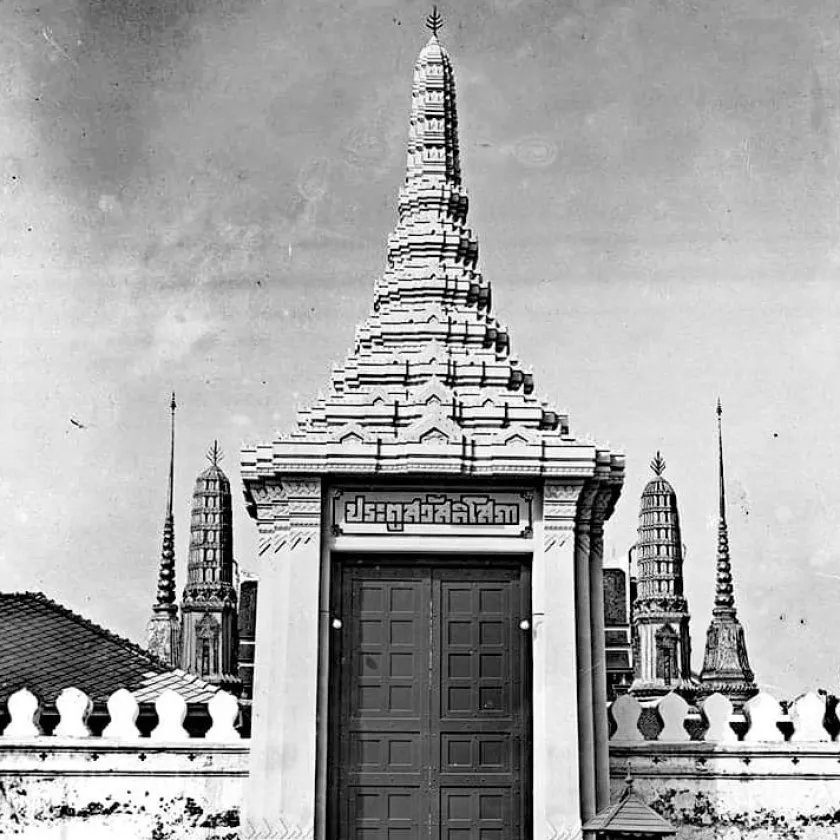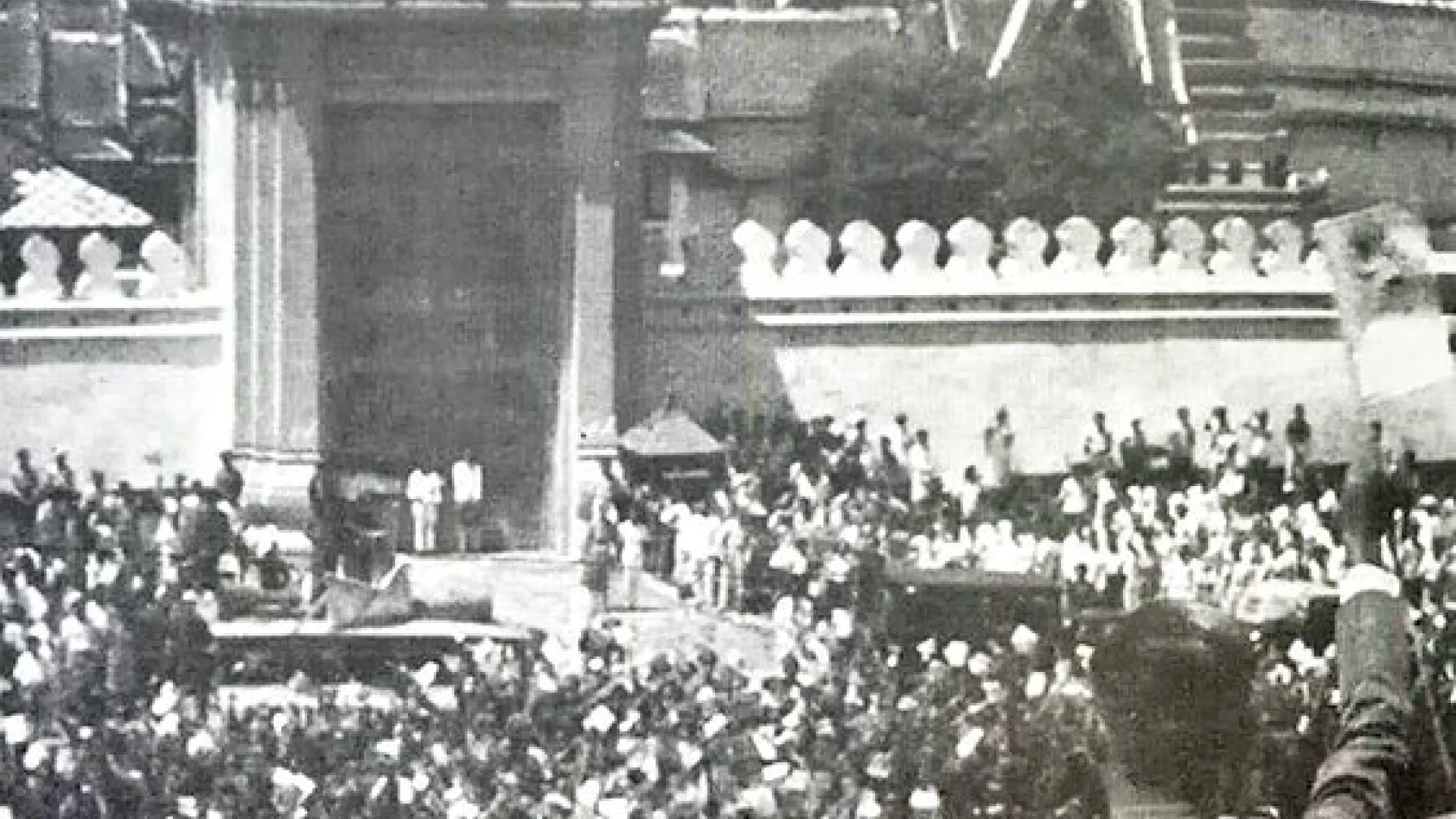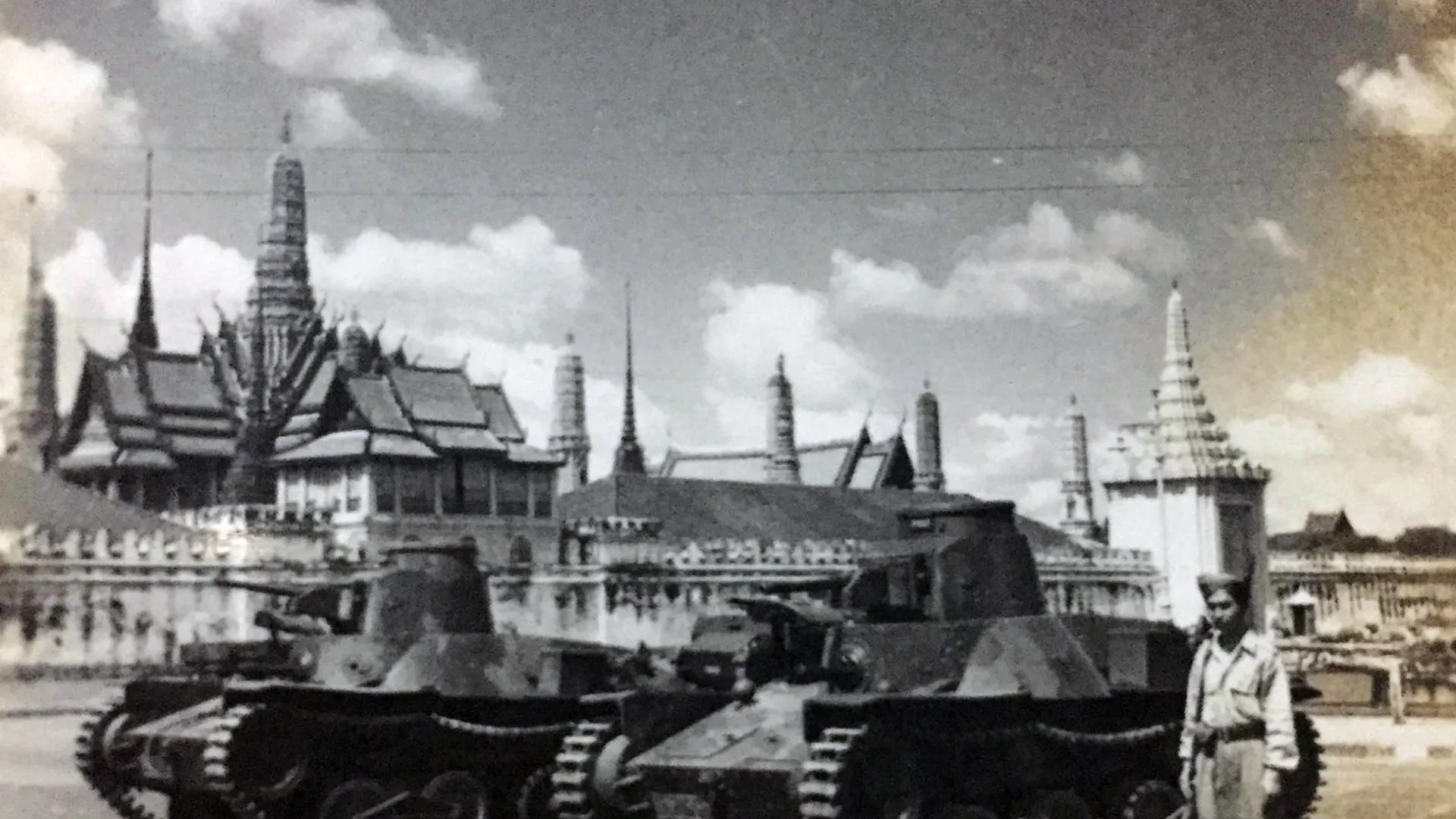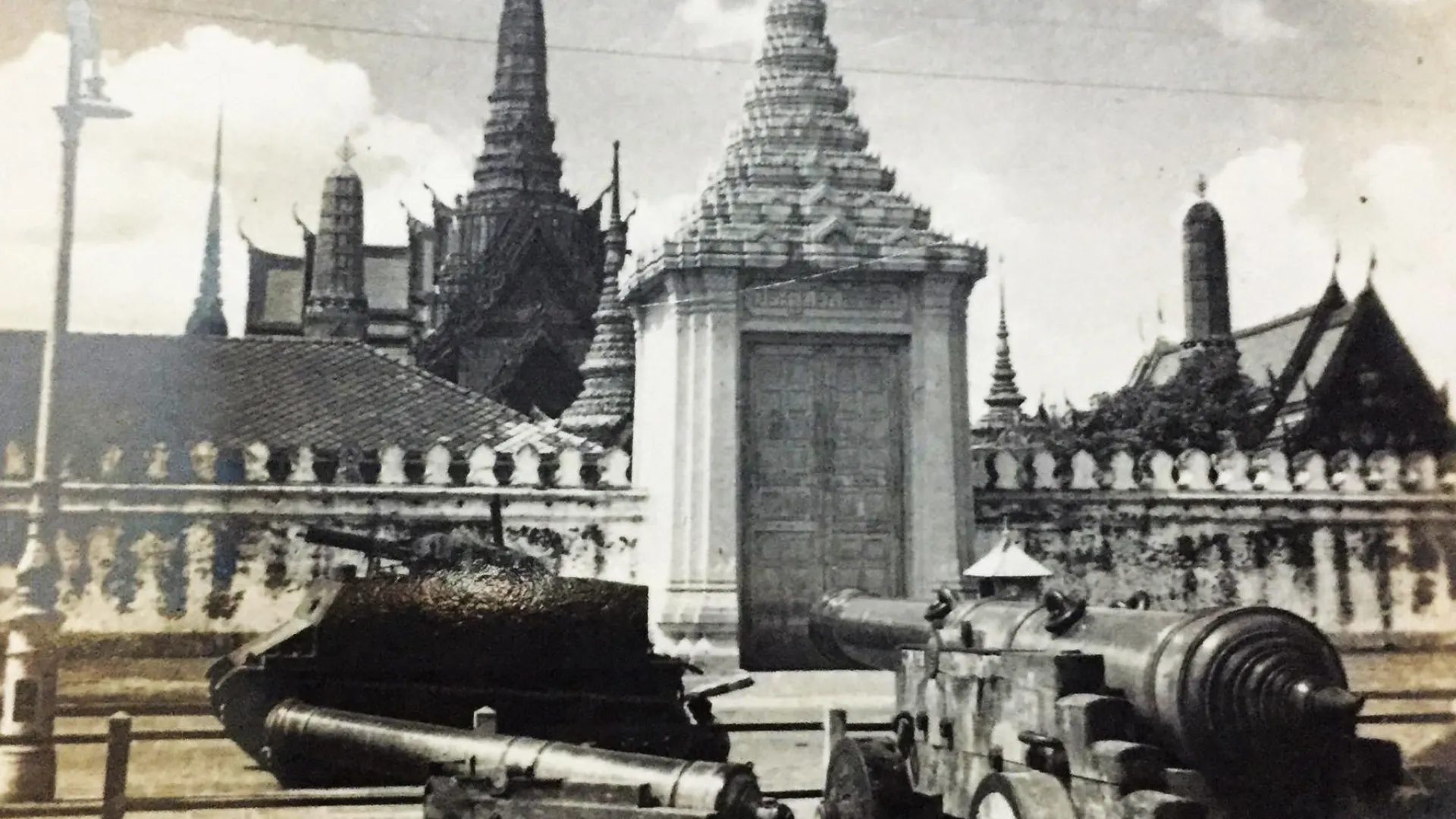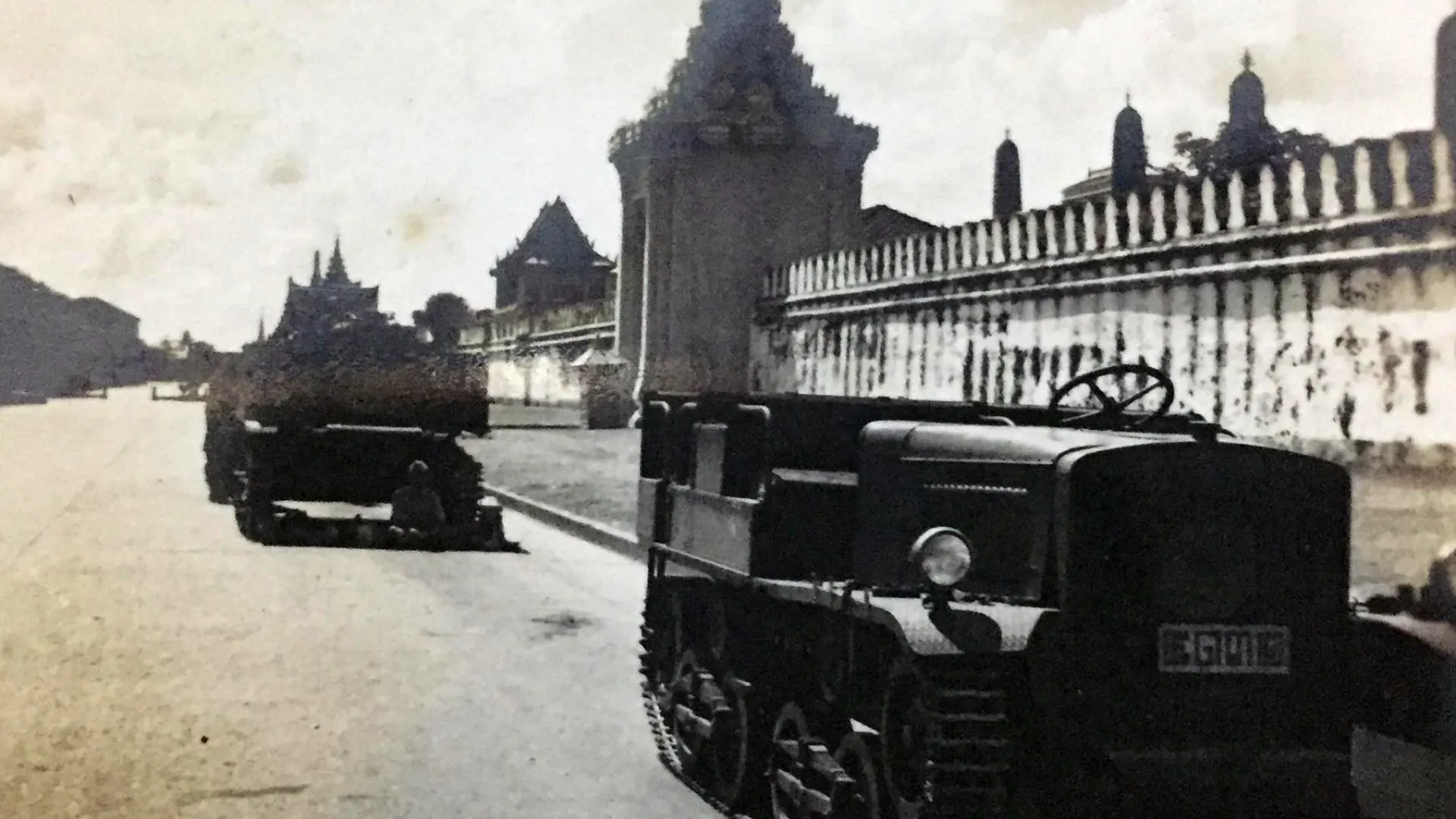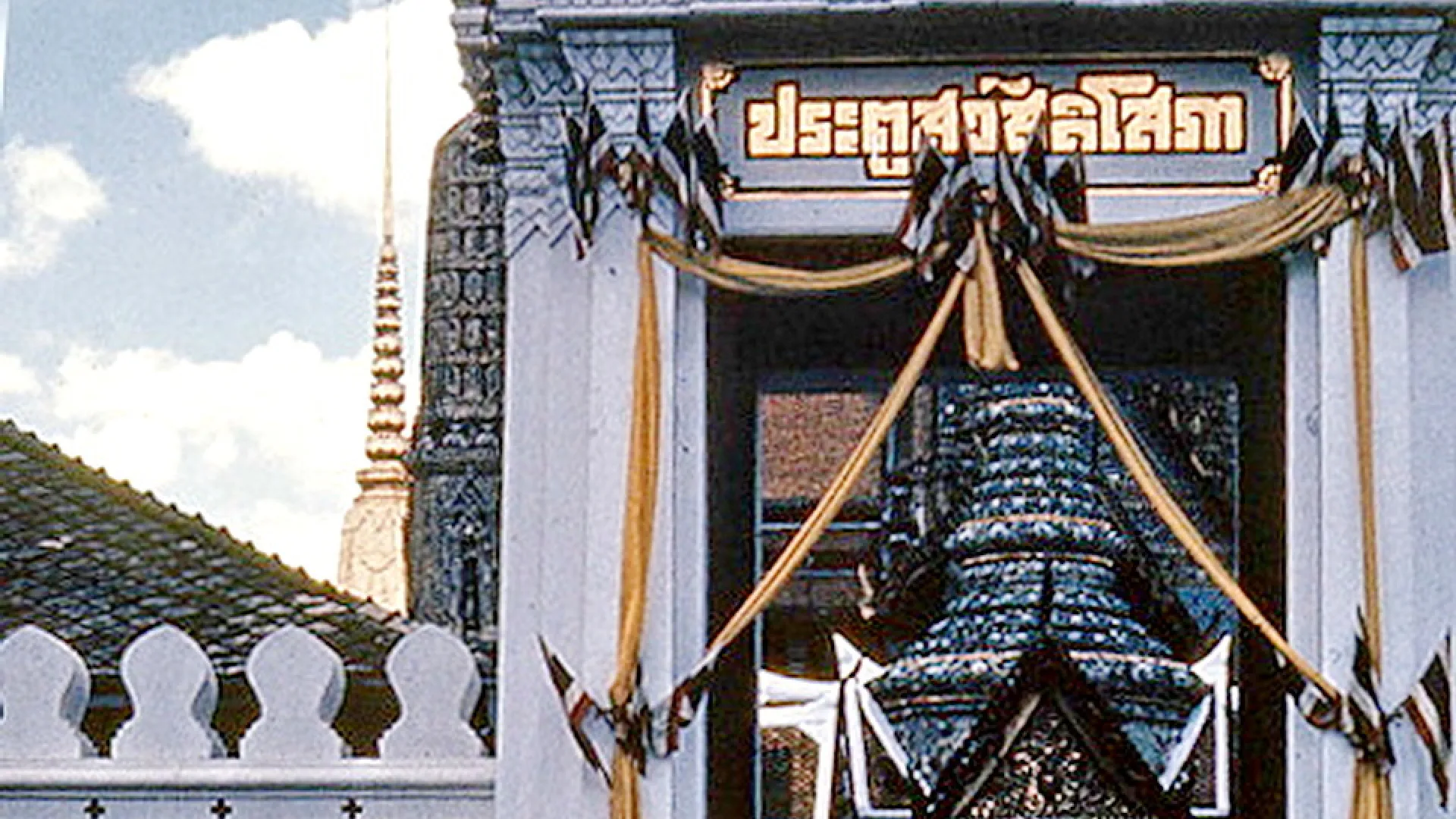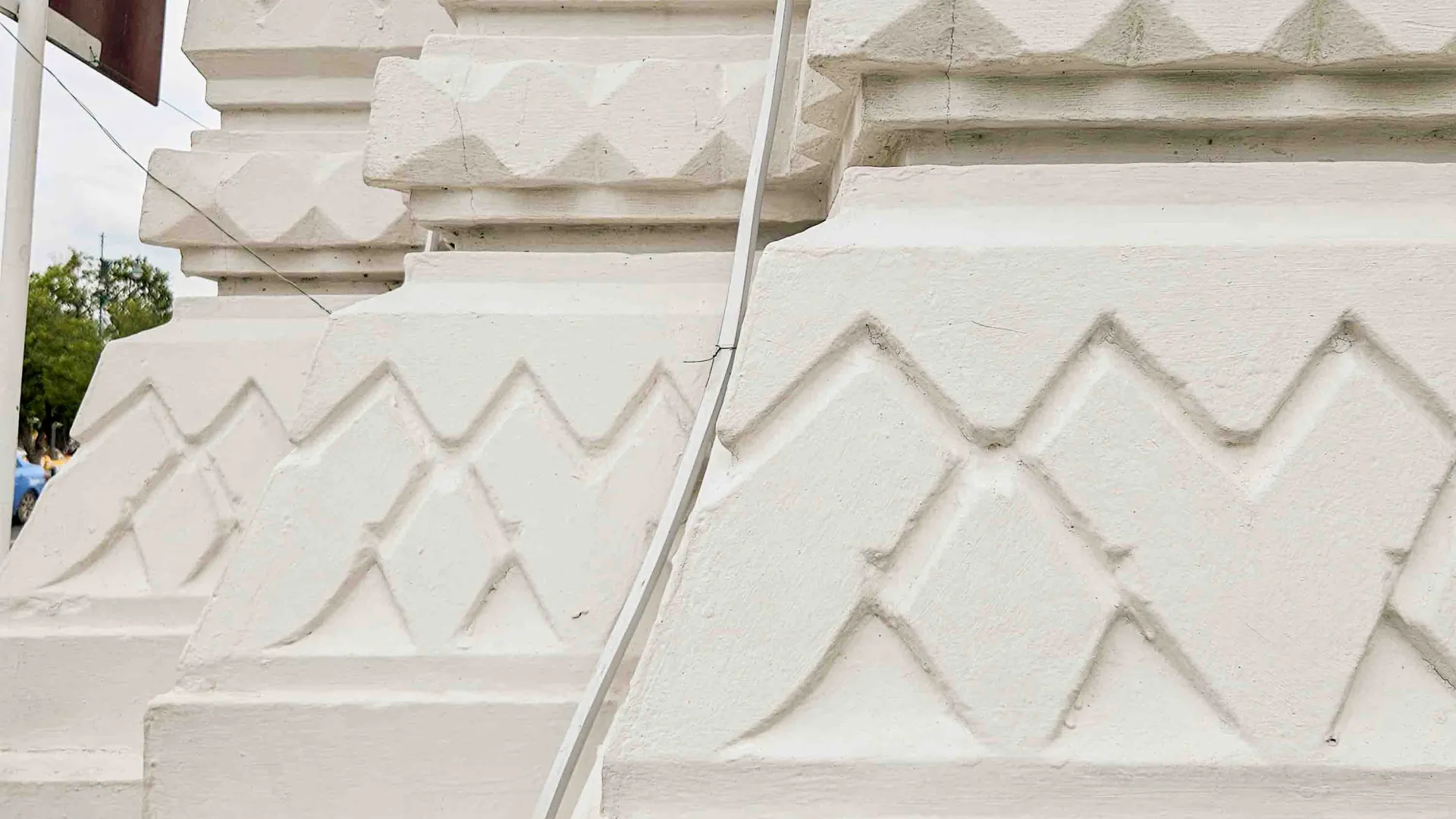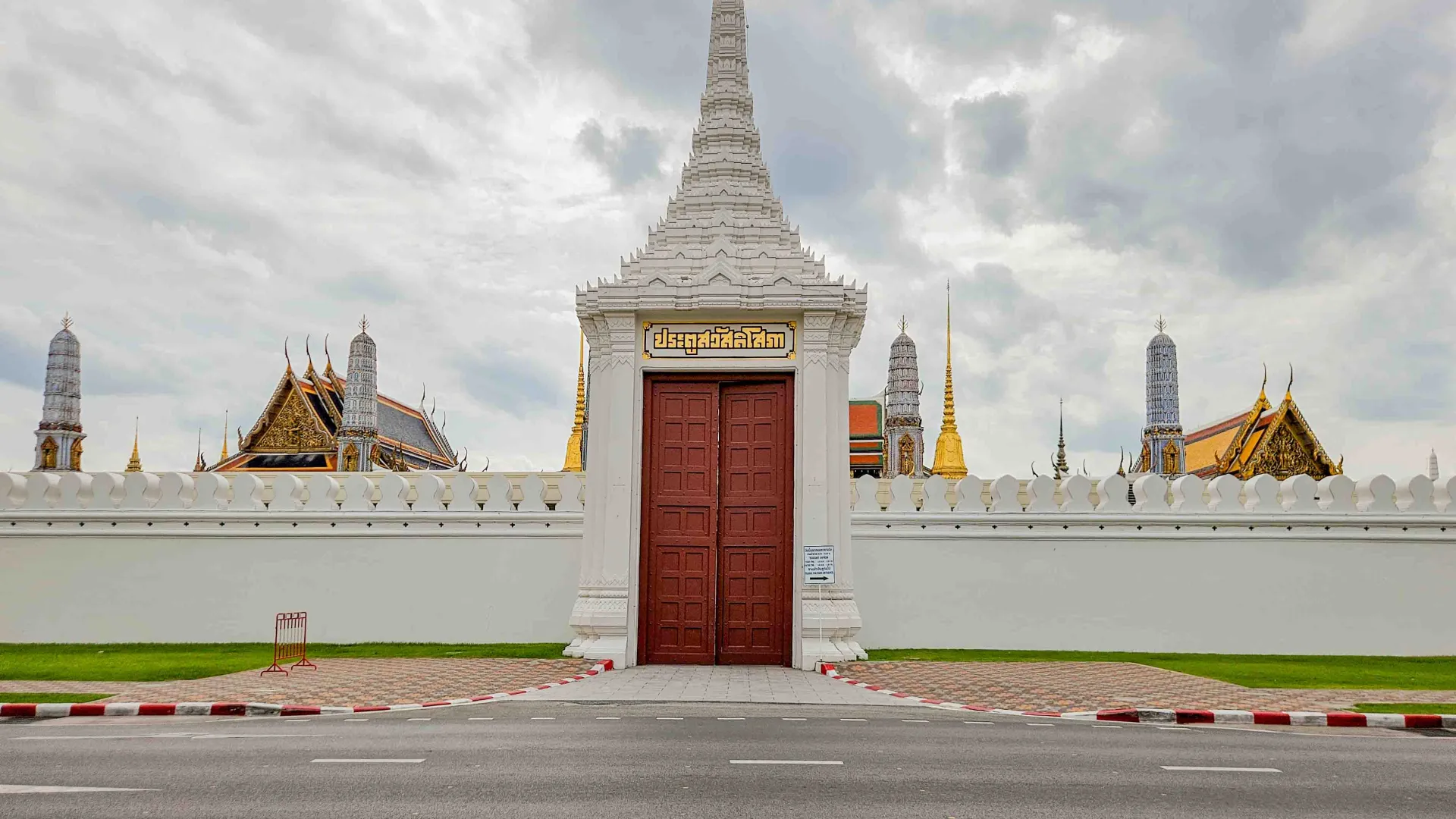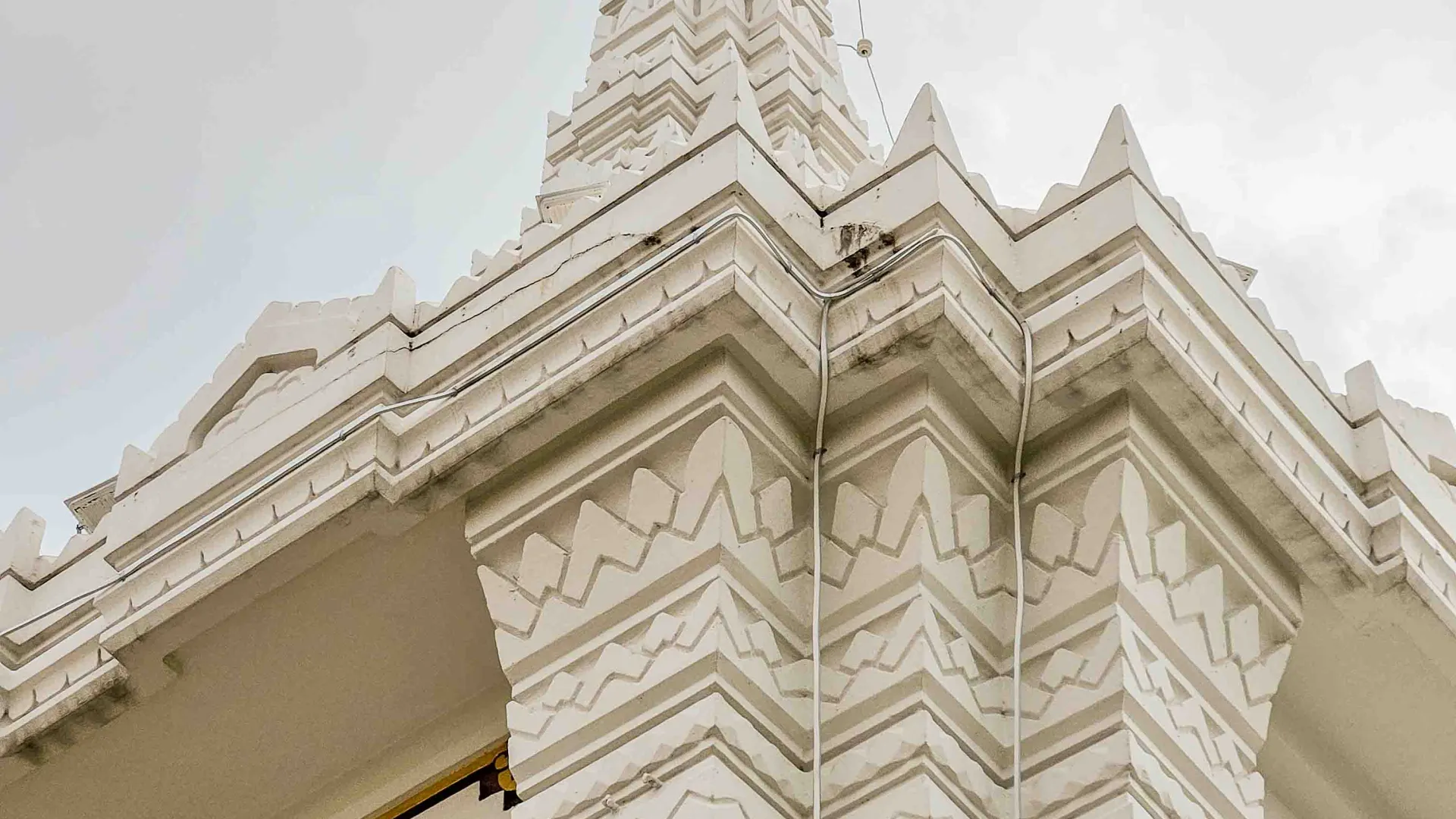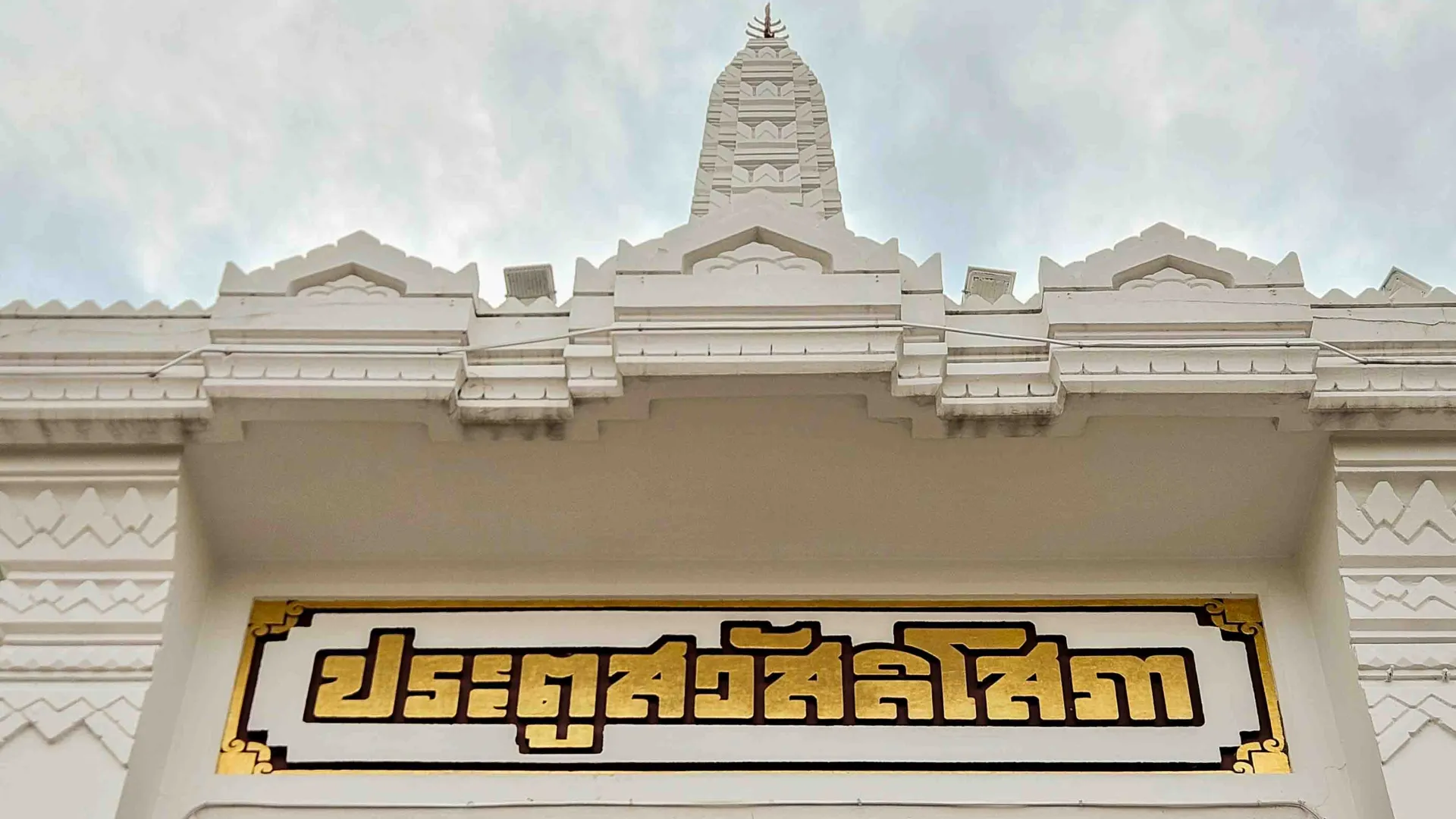The key characteristics of modern Thai architecture in concrete works that the People's Party used as a guideline for creating or restoring structures after the 1932 revolution was the blending of traditional Thai architecture to align with the modern technology of reinforced concrete structures at that time. The forms and rhythms of the designs emphasized simplicity, strength, and elegance, which can be seen from decorative elements such as eaves, roofs, finials, gables, bargeboards, and other components that have shorter proportions. Similarly, the patterns and the curling tips of the motifs were reduced, yet still referencing traditional forms. Importantly, the details were minimized to only geometric outlines. This new architectural style was partly a development that continued from the works of Prince Naris, who designed the chapel of Wat Phra Pathom Chedi (1928-1932), reflecting a clear trend of simplifying traditional elements. Prince Naris was also the teacher of "Phra Phromphichit," the first architect who applied reinforced concrete to Thai architectural works (and the founder and first dean of the Faculty of Architecture, Silpakorn University). Phra Phromphichit designed and supervised the construction of various architectural projects during the People's Party era, such as Wat Phra Si Maha That, Bang Khen, the crematorium at Wat Trai Mit (the first public crematorium), and the restoration of Suwasdi Sopa Gate, the outer gate of the Grand Palace, which clearly reflected his efforts in setting a benchmark for modern Thai architecture.
Suwasdi Sopa Gate is the outer gate on the eastern side of the Grand Palace, located between Phadet Datsakorn Fort and Sanchon Chaiwing Fort (opposite the Ministry of Defense). This gate was initially built during the reign of King Rama I, originally as a wooden gate, but was later rebuilt with bricks and mortar in a Western style during the reign of King Rama III, following the Grand Palace in Ayutthaya. In 1934, lightning struck and damaged the gate, so it was restored again in 1941 with Phra Phromphichit as the designer. At a glance, the newly restored gate appears to have a prang form not much different from other gate arches of the Grand Palace. However, upon closer inspection, one will find the form of "Thai art in concrete" that has been meticulously reduced, such as Yod Prang, Nopphasoon, Chom Moli, Krip Kanun, Rat Prakod, Bun Thalang, Soom Rangkai, etc. All of these indicate the adjustment of the forms and rhythms of Thai architecture to align with concrete materials in an elegant manner.
The concrete architectural style of Suwasdi Sopa Gate, along with other works by Phra Phromphichit, clearly corresponds with the modern architectural style on an international level in several aspects, such as simplicity, emphasis on form and volume, and the expression of the beauty of structure and materials. This correspondence was also an attempt by the People's Party to assimilate the forms and characteristics of architectural works that were becoming popular trends in society into Thai architectural styles. At the same time, formal characteristics that did not align with the framework of Thai architectural works were not adopted, such as the removal of all patterns in a way that did not require reference to any past or history of modern architectural works. This indicates the People's Party's attempt to "compromise" between the old (tradition) and the new (modern ideas), not to destroy the old, but to build upon the original roots to align with the changing times and conform to the idea of building a civilized nation by emphasizing the characteristics of modern Thainess with modern architecture as an important symbol for conveying meaning.
